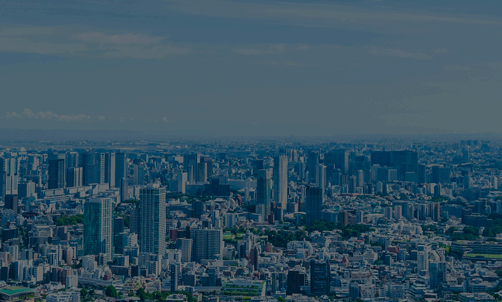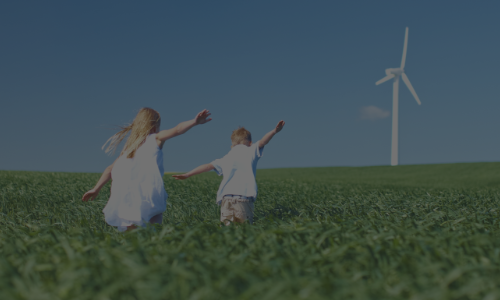- Home
- Sustainability Report
- Mitsubishi Materials Group's Initiatives on Material Issues
- Biodiversity retention
Strengthening Measures to Address Global Environmental Issues
Biodiversity Retention
Preserving Biodiversity
Basic Approach
In the 2019 Intergovernmental Science-Policy Platform on Biodiversity and Ecosystem Services (IPBES) Global Assessment Report on Biodiversity Conservation Challenges, the scientific evidence points to the global degradation of nature and the acceleration over the past 50 years of the factors that cause natural change. With the adoption of the "Kunming-Montreal Biodiversity Framework" at the Conference of the Parties to the Convention on Biological Diversity (COP15) in 2022, companies are now expected to engage in socio-economic activities aimed at halting and reversing biodiversity loss by 2030, the so-called "nature positive."
The preservation of biodiversity is an element that forms the basis of our approach to business. We clarify this point both internally and externally by stating, “We will be more considerate of biodiversity and work to live in the harmony with nature”, in the Article 5 of our Code of Conduct. In our Environmental Policy we state, “We engage in business activities that take ecosystems into account throughout our value chain, including the development of natural resources.” In light of changes in the social environment regarding biodiversity issues, since it is considered necessary to make our policy more concrete, we have established a Biodiversity Conservation Policy as a detailed version of our Environmental Policy.
Biodiversity Conservation Policy
(Establishment Date: September 24, 2024)
- Significance of Efforts to Conserve Biodiversity
-
Based on the Corporate Philosophy "For People, Society and the Earth," we as the Mitsubishi Materials Group have the vision of "Circulating resources for a sustainable future" and, with the mission to "Create a sustainable future (a prosperous, recycling-oriented and decarbonized society)," we have established the following in our Code of Conduct as a rule to observe: "We will work to manage our environmental impact and promote decarbonization, make efficient use of natural resources and accelerate recycling." We also consider the addressing global environmental issues as a Materiality in sustainable growth.
- Basic Principles
-
We recognize that our business activities benefit from natural resources such as minerals and water, and we will conduct business activities that minimize the impact on the natural environment in order to pass on these limited resources to future generations.
In addition, we will conserve forests and closed mines, which are our roots, and the natural environment owned by facilities including renewable energy power plants, which will be the mainstream in the future, as important assets and also raise awareness about biodiversity conservation through community activities.
Through these activities, we will promote biodiversity conservation activities to contribute to a nature-positive society. - Focused Areas
-
- Assessment of the impact of business activities and raw material procurement on biodiversity
- Demonstration of the biodiversity conservation functions through maintenance of company-owned forests and management of closed mines
- Provision of opportunities to interact with nature
- Effective use of resources and reduction of the impact on the ecosystem through metal resource recycling
- Ecosystem conservation through climate change measures
- Compliance with environment-related laws and regulations in operations, etc.
- Approaches
-
We will monitor the status of ecosystems and biodiversity at each business site, company-owned forests, closed mines, etc. In addition, we will ascertain the dependence and impact of our business (operations), including the supply chain, on the ecosystem, prioritize them and take appropriate measures.
To take measures, we will establish action targets to "avoid," "reduce" and "recover and regenerate" concerning substances that have an impact on nature and build an appropriate monitoring system in cooperation with local residents and experts.
Information disclosures
The Mitsubishi Materials Group has committed to conducting appropriate analyses of MMC's nature-related dependencies, impacts, risks and opportunities, and to pursue related disclosures, in line with the TNFD* recommendations announced in September 2023.
In the fiscal year ended March 2024, we conducted trial using the LEAP approach on sites that are considered to have a significant impact on nature. In the fiscal year ended March 2025, we carried out an analysis of our major businesses and sites. Based on these results, we have disclosed the TNFD Report. In the future, based on this analysis, we will compile specific responses and targets.
- TNFD Report 2025(4.8MB)
- * This data is only available in Japanese.
- * Taskforce on Nature-related Financial Disclosures. Established in June 2021.
Biodiversity Initiatives at the Mine
We depend on imports of copper concentrates, our main raw material, from overseas mines, and are investing in overseas mines to ensure stable procurement, but the impact on biodiversity is particularly noticeable at the overseas mines in which we invest. Therefore, the MMC Group places importance on compliance with laws and regulations and the concept of "Social License to Operate," and at each mine, we are working on reclamation at all mining sites where we conduct business activities to minimize the impact on the ecosystem. Each mine strives to minimize the impact on the ecosystem. Each mine conducts environmental impact assessments in accordance with the laws of the countries and regions where it operates and international agreements such as the "Ten Principles for Sustainable Development," and formulates appropriate closure plans through dialogue with local governments, local residents, and other stakeholders, in order to ensure smooth and appropriate responses to future mine closures, etc. We are also engaged in dialogue with local governments, local residents, and other stakeholders to formulate an appropriate closure plan.
In our business activities, the impact on biodiversity is particularly notable at the overseas mines from which we procure raw materials. At the copper mines in which we have invested and are our important suppliers (Copper Mountain Mine in Canada, Escondida Mine in Chile, Los Pelambres Mine in Chile and Mantovelde Mine in Chile), an Environmental Impact Assessment was appropriately conducted before the mining operations commenced and environmental monitoring has continued ever since. In the development project Zafranal Project (Peru), environmental permits were obtained in May 2023, and in Namosi Project (Fiji), basic studies for environmental impact assessment are being conducted and data is being collected for biodiversity conservation.
Copper Mountain is committed to biodiversity conservation management and reclamation, focusing on minimal disturbance and increasing areas that can be reclaimed prior to site closure. More specifically, Copper Mountain has developed strategies for achieving end land use and reclamation objectives, including improving physical stability, water quality and water-course protection, sediment retention and erosion control, soil salvage and storage, suitable revegetation, and the eradication of invasive species. These strategies, along with our plan to manage biodiversity conservation for vegetation, wildlife, water, and aquatic components, and a detailed monitoring plan for reclamation, are outlined in Copper Mountain’s Biodiversity Conservation Management Plan.
Mantoverde submits biodiversity data obtained through development projects to the Global Biodiversity Information Facility (GBIF), a biodiversity information sharing network. Specifically, we are studying the diet of the guanaco, the range of the fox, and the collection and preservation of seeds of unique species.
As an investor, we confirm in advance with operators of the mines that these initiatives will be taken, and encourage them to take such initiatives. In addition, when we procure materials from a mine in which we do not invest, we confirm that considerations are given to natural protected areas and biodiversity is preserved, in accordance with the CSR Procurement Standards of the Metals Company.
Initiatives at Manufacturing Sites
We also take initiatives to preserve biodiversity at our manufacturing facilities by considering the characteristics of each site. For example, at Naoshima Smelter & Refinery (Naoshima Town, Kagawa County, Kagawa), we have been engaged in tree-planting activities at a rate of one hectare per year with the aim of promoting vegetation and restoring forests which were partially destroyed by forest fires in the past and where it is difficult for plant life to grow due to the dry soil conditions and low rainfall. Naoshima Smelter & Refinery also ensures thorough treatment of exhaust gas and effluent released from the facility under its own standards, which are stricter than government standards, in its efforts to protect the natural environment of Setouchi.
Initiatives in Company-Owned Forests
We own 13,000 hectares of forest across Japan and manage it by considering the habitats of the plants and animals that live there. We carry out wildlife monitoring and include rare species confirmed to be living in the areas on our red list. Our eight forests in Hokkaido have obtained certifications for sustainable forest management with consideration for biodiversity. We will continue to consider the contact points between our business activities and biodiversity, and take action to conserve biodiversity from a broad perspective.
In April 2022, MMC was registered as a participating company in the "30by30 Alliance for Biodiversity" (Alliance), an initiative of the Ministry of the Environment of Japan. The Alliance is a coalition of volunteers established to achieve the international Nature Positive goal of halting and restoring biodiversity loss by 2030. In order to achieve this goal, Japan aims to conserve and protect at least 30% of its terrestrial and marine areas by 2030 (30by30), and in addition to expanding protected areas such as national parks, Japan will establish OECMs (Other Effective area-based Conservation Measures) for areas that contribute to biodiversity conservation such as corporate forests outside protected areas. The Ministry of the Environment has certified these OECM areas as “the Nationally Certified Sustainably Managed Natural Sites,” and MMC’s Teine Forest in Hokkaido received this certification in October 2023. The certified areas were registered in the international database as "OECM*," in August 2024, excluding overlaps with protected areas. (see TOPICS).
- * Other Effective Area-based Conservation Measures: Areas that contribute to biodiversity conservation other than officially protected areas, such as corporate forests.

- "Teine Forest, one of the Materials' Forests" Certified as a "The Nationally Certified Sustainably Managed Natural Sites" by the Ministry of the Environment
- Biodiversity conservation in Company-Owned forests highly evaluated - -
"Teine Forest, one of the Materials' Forests" ("Teine Forest"), a company-owned forest of Mitsubishi Materials Corporation, has been certified as one of the "The Nationally Certified Sustainably Managed Natural Sites" by the Ministry of the Environment.
We have promoted a variety of activities related to biodiversity conservation, including participation in the "30by30 Alliance for Biodiversity" led by the Ministry of the Environment, and providing information on Teine Forest for the "Certification Demonstration Project" that supports the establishment of a system for certifying areas as "The Nationally Certified Sustainably Managed Natural Sites."
Teine Forest, which has been certified this time, is a suburban forest adjacent to the urban area of Sapporo City, although it is home to a wide variety of flora and fauna. Teine Forest has been highly evaluated for its adoption of a work system with low environmental impact on forest management to conserve its biodiversity and for its monitoring activities using digital tools.


- Participation in the 30by30 Alliance for Biodiversity
- We Will Make Use of Our Company-Owned Forests to Contribute to Conservation of Biodiversity - - Cooperation with a Demonstration Project for Certifying "Natural Symbiosis Sites (Tentative Name)"
- Contributing to the Realization of a Sustainable Society by Conserving Biodiversity in Company-Owned Forests - - "Teine Forest, one of the Materials' Forests" Certified as a "Natural Symbiosis Sites" by the Ministry of the Environment
- Biodiversity Conservation in Company-Owned Forests Highly Evaluated -
- Participation in the 30by30 Alliance for Biodiversity
Biodiversity Initiatives at Our Mine
Monitoring Water Quality at Copper Mines (Copper Mountain Mine)
We invest in Copper Mountain Mine, located in British Columbia, Canada, where we engage in corporate management with an emphasis on biodiversity.
Copper Mountain Mine (CMM) begins our mine planning process with a comprehensive progressive reclamation plan to safely transition from mining operations to closure. This plan includes planning for closure, allocating appropriate resources for reclamation, and involving stakeholders, including local First Nations, at the earliest stages of operations. At the CMM, they are working with First Nations to clarify end land use objectives, and to understand and disseminate information about the baseline conditions related to the social, economic, environmental, and cultural aspects of our operations and the desired recreational and traditional end land uses for the mine site.
CMM’s progressive reclamation begins at the mine planning stage and is continuously executed as a part of mine operations. This progressive reclamation process started at CMM in 2018. The 2018 reclamation areas were small-scale initial trials. This progressive reclamation program is based on 25 hectares of reclamation per year over the next 10 years.
In 2023, CMM planted approx. 77,000 shrubs and trees on the Non-Economic Rock Storage Areas (NERSA) in the areas previously identified for reclamation.
Results of Reclamation Monitoring at Copper Mountain Mine are shown below.
| CMM PROGRESSIVE RECLAMATION | |
|---|---|
| Year | Progressive Reclamation activity (ha) |
| 2023 | 26.30 |
| 2022 | 20.31 |
| 2021 | 23.97 |
| 2020 | 20.99 |
| 2019 | 7.47 |
In addition, we continually monitor the quality of water in local rivers, in accordance with quality guidelines issued by the provincial government, and also carry out ongoing biodiversity surveys of the surrounding area in order to gauge the impact of our activities on the ecosystem, including birds, mammals, amphibians, aquatic organisms and their habitats.
In 2019 we launched the Fish Habitat Offsetting Plan (FHOP) to offset a portion of the aforementioned Wolfe Creek, and have continually engaged in environmental monitoring thereafter. The habitat for organisms in the offset stream was recognized as a good fish spawn and received an award in the Metal Mine category from the British Columbia Technical and Research Committee on Reclamation in recognition of this achievement and rearing environment for rainbow trout and other species.
 The FHOP site
The FHOP site
 A rainbow trout
A rainbow trout
Environmental Impact Assessment as part of Copper and Gold Deposit Development Project
We are carrying out a basic environmental study geared towards conducting EIA* as part of a development project in Zafranal, in southern Peru. At the same time, we are studying and analyzing ways to minimize the potential impact on the environment by the development, and are looking into measures to secure new habitats for species of flora and fauna if there is a risk of any impact on the ecosystem.
- * Environmental Impact Assessment
 Exploration drilling
Exploration drilling
 River water quality survey
River water quality survey
Environmental Impact Assessment on Construction of Power Plants
Environmental Impact Assessment for Launch of Operations of Appi Geothermal Plant
In 2015, we established Appi Geothermal Energy Corporation in conjunction with Mitsubishi Gas Chemical Company, Inc. to the west of Appi Highlands in Hachimantai City, Iwate. We were joined by Electric Power Development Co., Ltd. in 2018, and the three companies are promoting the project towards the launch of the operation. The project involves the operation of a 14,900 kW geothermal power plant in 2024. Appi Geothermal Energy Corporation began procedures for an Environmental Impact Assessment in 2015, and studied, predicted, and assessed the impact of the construction of the Appi Geothermal Power Plant on the surrounding environment. The company received approval for the final environmental impact statement from the Minister of Economy, Trade and Industry in January 2018 and began construction of the plant in August 2019.
Voluntary Assessment of the New Komatagawa Hydroelectric Power Plant
We own a hydroelectric power plant immediately below the Moriyoshi Dam in the Komata River, a branch stream of the Ani River in the reservoirs along the Yoneshiro River in Kita-Akita City, Akita. In May 2019, we began construction on the New Komatagawa Hydroelectric Power Plant (rated output: 10,326 kW), a hydroelectric power plant that will use the discharged water which was used for power generation at the existing plant. When planning the construction of the new power plant, we undertook a voluntary environmental assessment to determine the impact on the surrounding environment. We are also creating a new plan to ensure that the flow rate of surplus from the new plant will be appropriate for the river to preserve the surrounding river environment. In addition, we will carry out eco-friendly construction work. We will use power supplied from the existing hydroelectric power plant, a renewable energy, for construction work on the headrace tunnel with TMB method. We will also engage in environmental initiatives including the recycling trees that were felled to construct the new power plant.
Biodiversity Conservation Activities of PT Smelting (Indonesia)
Activities for Protecting Rare Animals
To highlight its ongoing contributions to protecting biodiversity in Indonesia, since 2022 PT Smelting has been co-sponsoring the Komodo Release Program, one of the wildlife conservation programs run by Taman Safari Indonesia.
The Komodo dragon is an ancient species of lizard native to Indonesia, and is designated as an endangered species by the International Union for Conservation of Nature (IUCN).
In 2023 six Komodo dragons were released into their natural habitat in East Nusa Tenggara. They were released into their original habitat after being raised at a safari park research institute. The program aims to research the movements and ecology of Komodo dragons after they have been released into the wild with the use of GPS. The program is scheduled to run from 2022 to 2027.
 Komodo dragon
Komodo dragon
Photo provided by Taman Safari Indonesia







